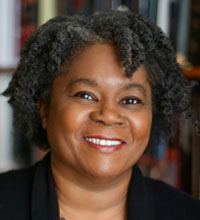
Guest Post by Professor Kathleen Elliott Vinson
Professor of Law, Suffolk University Law School
If leadership development is a life-long learning process, can a one-week intensive intersession leadership course possibly be effective for law students? Spoiler alert – yes it can!
“I thought the course would be lectures about lawyers who are leaders.” “I thought the class would tell us we had to adopt a particular leadership style or have a particular talent.” “I thought you had to be born a natural leader.” “I never considered myself a leader before.” These were common myths and comments of students as they reflected back on the Lawyers as Leaders intensive one-week course during the winter intersession.
Instead, after completing the course, students learned that leadership is a skill that can and should be taught in law schools. They discovered that leadership is not an innate ability, title or trait. They began to develop their leadership skills through practice, feedback, and reflection.
The course focused on leading self, leading others, and leading change. Although time was limited, threads throughout the course included self-discovery and relationships. Students realized leadership is personal and requires trust. Students engaged in self-assessments, role-playing, reflections, and working in teams. At the core, students focused on their sense of purpose (their “why”), their values, their identities, their preferences as well as others, their strengths and blind spots, and what they envisioned as their leadership philosophy and legacy.
Class began with students sharing their #ThisIsMe assignment that included their responses (including pictures) to several prompts (what do you find challenging, what are you proud of, what is something that scares you, what is your theme song, what is a fond childhood memory, etc.) Their generosity, courage, and vulnerability in sharing their responses developed trust and connections with everyone in the class that grew stronger each day of the course. They grappled with defining what leadership means and went on to explore leadership theories and styles, personality preferences, well-being, fixed v. growth mindset, grit and resilience, the gift of feedback, emotional intelligence, conflict styles and difficult conversations, characteristics of inspiring leaders, inclusive leadership, and the impact of leadership.
While the breadth and depth of each concept may have been more of an introduction than a deep dive, the one-week course was a start for students on their life-long journey of leadership development — like a train leaving the station and traveling along a track. The journey may be different for each student. I was grateful to be a small part of their leadership journey — like a conductor on a train full of different passengers.
Thus, I ended class with a clip from Polar Express when the conductor (Tom Hanks) punches the train tickets of several children as they board the Polar Express on their way home from their journey to the North Pole. The conductor had previously punched two letters in each of the children’s tickets at the beginning of the journey to the North Pole. Then, when the conductor punches their tickets on the return trip, the holes in the ticket become a word or phrase representing a message the child has learned. As they board the train for the return trip, the first child’s ticket that the conductor punches holes in spells the word “Learn.” The holes the conductor punches in the ticket of the next child spells the phrase “Depend On” then it magically changes to “Rely On” then “Count On.” The holes punched in the ticket of the third child spell out the word “Lead” (“as in leader, leadership, lead the way”). The ticket of the last child spells “Believe.” These tickets summed up several leadership lessons in the course, no matter the length of the journey: leadership can be learned; trust is essential; leadership is not about a title but about the action to lead; and finally, believe you are a leader, that you can continue to develop leadership, and that your leadership will have an impact.
Perhaps because students were immersed every day, all day, for a week, learning about leadership that many remarked that the connections they made, and the impact of the course felt deeper than a semester-long course. It may not be the length of the journey that matters (the journey on the Polar Express was only one night), it is the lessons learned along the way. Don’t hesitate to get on board the train.
– Kathleen Elliott Vinson






